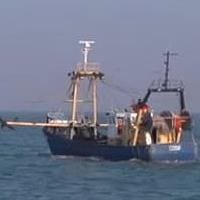(LUXEMBOURG) – EU fisheries ministers reached a political agreement Tuesday on next year’s total allowable catches (TACs) and quotas per member state for the ten most commercially important fish stocks in the Baltic Sea.
The agreement comes at a difficult time for the Baltic Sea, with environmental pressures and challenges stemming from pollution are taking their toll on fish stocks as well.
The agreement includes a number of changes to the previous year’s TACs. In particular:
- Due to low biomass levels, the TAC for herring in the Western part of the Baltic Sea was limited to bycatches and was reduced by 50%; in the Central Baltic it was cut by 45%.
- Given the lack of improvement in cod stocks, the Council continued the practice of setting only a specific TAC for bycatches. This was also the case for salmon in the Main Basin, although the TAC for salmon stocks in the Gulf of Finland saw a moderate increase.
- The TACs for plaice and sprat were increased by 25% and 13% respectively.
The agreement was welcomed by the Commission, who acknowledged that the problems in the Baltic had had a ‘devastating impact on our fishers’. Fisheries Commissioner Virginijus Sinkevicius said: “our comprehensive approach, with concrete actions targeting environment, is crucial. The decisions reached are difficult, but necessary, so that the Baltic Sea can remain the source of livelihood for fishermen and women today and tomorrow.”
The TACs and quotas agreed by ministers are based on the latest scientific advice provided by the International Council for the Exploration of the Sea (ICES). They also reflect the aims of the Common Fisheries Policy (CFP) and the provisions of the multiannual management plan for the Baltic sea. Initial negotiations took place at regional level via BALTFISH, the regional fisheries body for the Baltic Sea, which is currently chaired by Latvia.
In addition to the abovementioned TACs and national quotas, the Council agreed on specific measures for cod stocks, including restrictions applied to recreational fishing in subdivisions 22-26; and temporary fishing bans (with certain exemptions) during specific periods to protect cod spawning.
As part of the political agreement, the Council also decided on fishing opportunities for Norway pout, the fishing season for which begins each year on 1 November. As this stock is partly present in UK waters, the TAC will be revised at the end of the year to take into account the outcome of consultations with the United Kingdom.
Council agreement on 2022 catch limits in the Baltic Sea
Agriculture and Fisheries Council, 11-12 October 2021, main results


